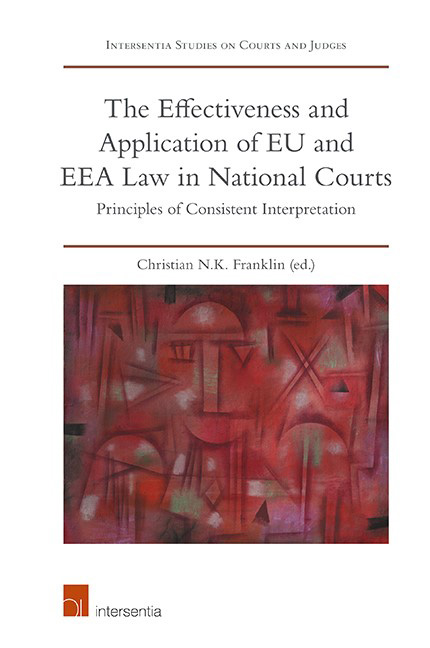 The Effectiveness and Application of EU and EEA Law in National Courts
The Effectiveness and Application of EU and EEA Law in National Courts Iceland
Published online by Cambridge University Press: 31 January 2019
Summary
INTRODUCTION
The Court of Justice of the European Union (ECJ) has developed a number of key principles in order to secure effective and uniform application of EU law throughout the national legal orders of the EU. Primacy, direct effect and the principle of consistent interpretation are core principles in this context. The last of these principles to emerge was the principle of consistent interpretation, established by the ECJ in the Von Colson case. These principles are playing an increasingly important role both in the case-law of the ECJ and in national courts in Europe, when private parties are seeking to have their EU originating rights recognised at the national level. Recently the ECJ has summarised the principle as follows:
The principle that national law must be interpreted in conformity with European Union law also requires national courts to do whatever lies within their jurisdiction, taking the whole body of domestic law into consideration and applying the interpretative methods recognised by domestic law, with a view to ensuring that the directive in question is fully effective and achieving an outcome consistent with the objective pursued by it.
It is also clear from the ECJ ‘ s case-law that the principle should come as the first alternative in order to secure conforming interpretation and application of EU law – before the principle of direct effect, which should be explored if conforming interpretation is not possible.
In European Economic Area (EEA) law, the principle of direct effect is not recognised – in fact, its absence is explicitly confirmed by the European Free Trade Association (EFTA) Court. Therefore, in the national legal orders of the EEA EFTA States, individuals and economic operators are unable to rely directly on non-implemented EEA rules before national courts in the EFTA States (i.e. in Iceland and Norway – Lichtenstein follows a monist tradition). Additionally, while certain primacy obligations are secured through Protocol 35 of the EEA Agreement, this principle is less far-reaching in EEA law than in EU law (see further below). In this sense, it is logical to take the view that a parallel principle of consistent interpretation – as established and developed in the case-law of the EFTA Court – must play an even greater role in EEA law than in EU law.
- Type
- Chapter
- Information
- The Effectiveness and Application of EU and EEA Law in National CourtsPrinciples of Consistent Interpretation, pp. 363 - 410Publisher: IntersentiaPrint publication year: 2018
